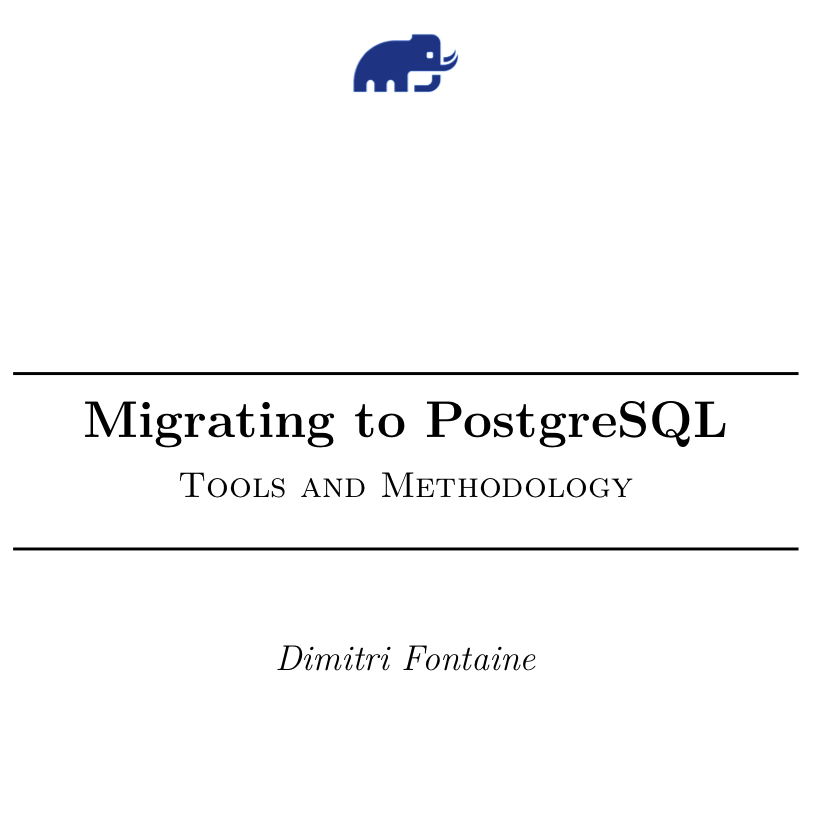After having been involved in many migration projects over the last 10 years, I decided to publish the following White Paper in order to share my learnings.
The paper is titled Migrating to PostgreSQL, Tools and Methodology and details the Continuous Migration approach. It describes how to migrate from another relational database server technology to PostgreSQL. The reasons to do so are many, and first among them is often the licensing model.
From MySQL to PostgreSQL over the Week-End!
On February the 18th, 2015 I received a pretty interesting mention on Twitter:
@tapoueh thank you for pgloader, it made our migration from mysql to postgresql really easy (~1Tb)
— CommaFeed (@CommaFeed) February 18, 2015
Their story follows:
@tapoueh it was almost too easy, I just ran the one-liner and waited for 48 hours. Nothing to change in the app, thanks to hibernate.
— CommaFeed (@CommaFeed) February 18, 2015
While this is awesome news for this particular project, it is still pretty rare that having to change your connection string is all you need to do to handle a migration!

If you’re less lucky than CommaFeed, you might want to prepare for a long running project and activate the necessary resources, both servers and people availability. Even if you’re using an ORM and never wrote a SQL query yourself, your application is still sending SQL queries to the database, and maybe not all of them can be written in a PostgreSQL compatible way.
Get the White Paper now and learn about the Continuous Migration methodology in order to make your migration to PostgreSQL a success. The White Paper is free to download, just register your email for updates!
Continuous Migration
Migrating from one database technology to PostgreSQL requires solid project methodology. In this document we show a simple and effective database migration method, named Continuous Migration:
- Setup your target PostgreSQL architecture
- Fork a continuous integration environment that uses PostgreSQL
- Migrate the data over and over again every night, from your current production RDBMS
- As soon as the CI is all green using PostgreSQL, schedule the D-day
- Migrate without any unpleasant suprises… and enjoy!
This method makes it possible to break down a huge migration effort into smaller chunks, and also to pause and resume the project if need be. It also ensures that your migration process is well understood and handled by your team, drastically limiting the number of surprises you may otherwise encounter on migration D-day.
Conclusion
The the third step above is the migration of the data, and this isn’t always as easy to implement as it should be, and that’s why the pgloader open source project exists: it implements fully automated database migrations!
For your developers to be ready when it comes to making the most out of PostgreSQL, consider reading The Art of PostgreSQL which comes with an Enterprise Edition that allows a team of up to 50 developers to share this great resource.
